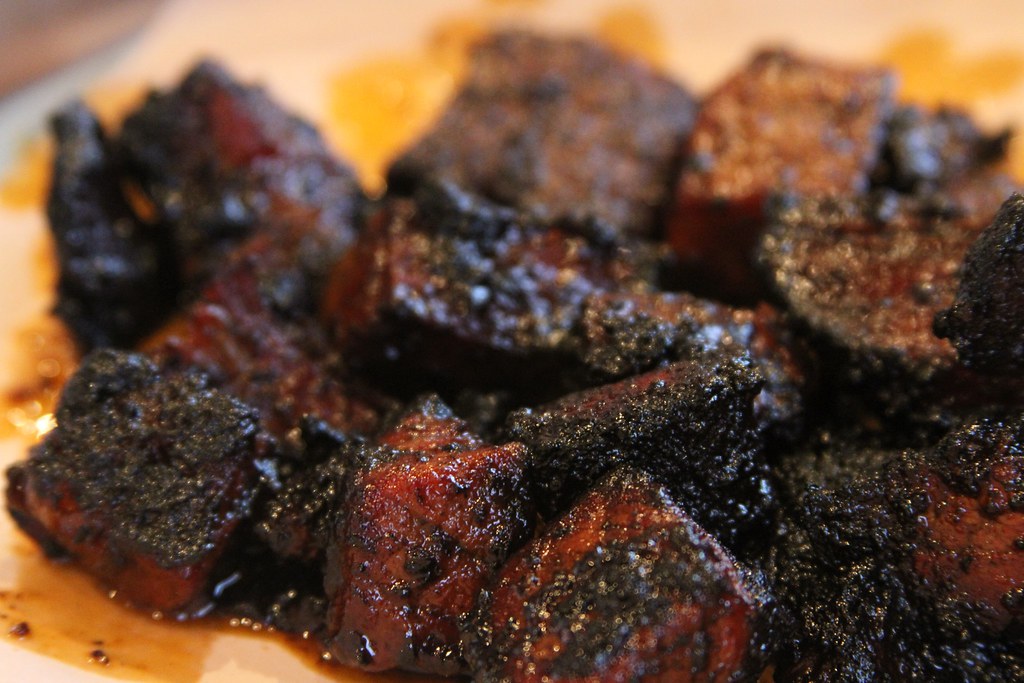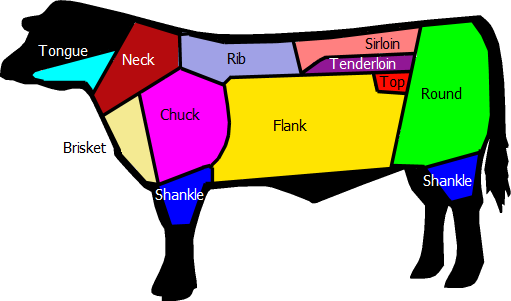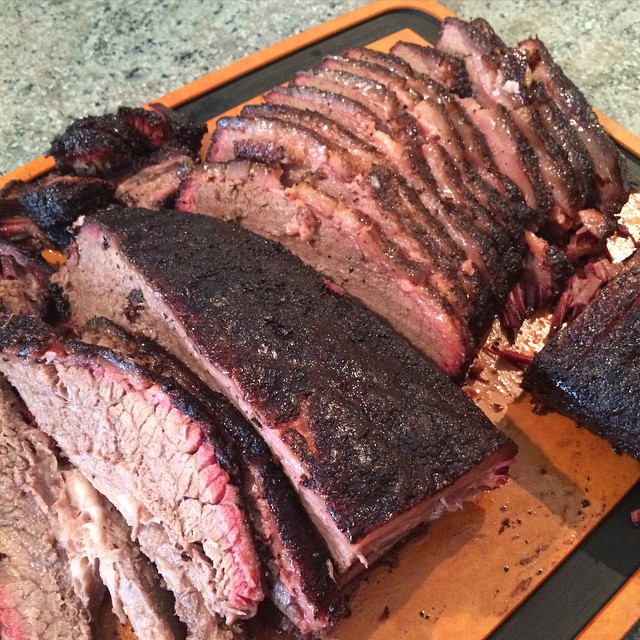It's Time to Celebrate the Everest of BBQ
One of my very favorite foods of all time is brisket. I mean, if we're really getting specific, I'm a burnt ends kinda girl.

Get me a nice burnt ends sandwich on a good roll, with a side of potato salad, coleslaw, a nice slice of thick, buttered Texas toast and I am one happy girl! Thankfully, I know brisket will be on the menu soon since I will never miss an opportunity to celebrate brisket and all it's tender goodness on May 28: National Brisket Day.
Brisket is a very popular favorite for those who love BBQ. From what I understand, it is the Everest of barbequed meats. It is a very time-intensive process to deliver perfectly tender meat, with a well-seasoned crispy exterior. If you take barbecuing seriously, once you have figured out how to make a perfect brisket, you are at the summit overlooking the whole, beautiful world. It doesn't get better than that.
If you've ever watched a barbecuing competition on tv or anything, you see that they spend all day making brisket. It is a big time commitment that people get very passionate about. For traditional Texas-style brisket, you get a good rub on the meat and let that sit in the fridge overnight. Then they will smoke that brisket for at least 8 hours, low and slow, spraying it or mopping it down every couple of hours so it doesn't dry out. (I've even seen some guys mop it down every 10 to 15 minutes.....over the course of 8+ hours!!! Now that's commitment.)
Now let's look a little deeper and learn a little more about the beloved cut of beef. Here are some things you may not know about brisket. Brisket is a cut of meat from the breast or lower chest of beef or veal. The brisket muscles include the superficial and deep pectorals.

As cattle do not have collar bones, these muscles support about 60% of the body weight of standing or moving cattle. These results in a significant amount of connective tissue, so this meat must be cooked correctly to tenderize the connective tissue.

Check out all the different ways brisket is served all around the world:
The origins of brisket in Texas actually go way back to the indigenous Native Americans of Southern Texas.
In traditional Jewish cooking, brisket is most often braised as a pot roast, especially as a holiday main course, usually serve at Rosh Hashanah, Passover, and on the Sabbath.
Brisket is the most popular cut for corned beef, which can be further spiced and smoked to make pastrami.
In Hong Kong, it is cooked with spices over low heat until tender, and is commonly served with noodles in soup or curry.
In Korean cuisine it is first boiled at low temperature with aromatic vegetables, then pressed with a heavy object in a container full of a soy sauce-based marinade. The ensuing preserved meat is served in match-length strips as an accompaniment to a meal. This is called jang jorim.
In Thai cuisine, it is used to prepare suea rong hai, a popular grilled dish originally from Isan.
In Vietnamese cuisine, it is a common cut of meat used in pho.
In Britain it is normally cooked very slowly in a lidded casserole dish with gravy. This dish is known at pot roast in the US, is known as braised or stewed beef in the UK, is often accompanied by root vegetables.
In Germany, brisket is braised in dark German beer and cooked with celery, carrots, onions, bay leaves, and a small bundle of thyme.
That is just so fascinating to me! You take one cut of meat and look at the variety of end results you have! This tells me one thing: yet another reason not to mess with Texas. The Texas way of making brisket seems by far the most time intensive, but boy is it worth it!

I have never made Texas-style smoked brisket because we don't have a smoker. It is definitely one of the life goals for our family though :) I need brisket in my life way more often than it is right now! Here is a good recipe with rave reviews for Bobby Flay's Texas-style brisket if you are up for a challenging, yet rewarding meal!
Bobby Flay's Smoked, Spiced Rubbed, Texas-Style Brisket
Yield: 8 servings
Serving size: 8
Calories per serving: 15
3 tbsp ancho chile powder
2 tbsp kosher salt
1 tbsp allspice, ground
1 tbsp celery seeds
1 tbsp coriander seeds, ground
1 tbsp garlic powder
1 tbsp mustard seeds, ground
1 tbsp dried oregano
1 tbsp smoked spanish paprika
1 tbsp freshly ground black pepper
8 one to 10 pound brisket, untrimmed
2 cups apple juice (in a spray bottle)
Directions:
Get your smoker running at 225 degrees F with hardwood charcoal and a few handfuls of soaked wood chips. This temperature should be maintained throughout the entire smoke. (If you are using a grill: Set up the grill for indirect heat, banking the coals on one side of the grill and scattering the wood chips on top. Maintain the temperature at 225 degrees throughout the smoking process, adding chips as necessary, until you wrap the brisket in foil.)
Place the brisket fat-side up on your smoker grate and close it up for the long smoke.
Open your barbecue smoker every hour or 2 and spray the brisket liberally with apple juice to help the meat from drying out. Also keep apple juice in the water pan if you are using a water smoker.
When the internal temperature reaches 165 to 170 degrees, after about 4 hours, wrap the brisket in aluminum foil and continue to cook for another 3 ½ to 4 ½ hours. This little trick is a big help in getting the meat tender, especially for beginners. Figure that a brisket smoked at around 200 degrees will take about 1 ½ hours per pound. The brisket is done when the internal temperature reaches 185 degrees F. Remove and let rest 20 minutes before slicing. Remove the foil from the brisket over a large pan or disposable pan and reserve the liquid. Cut off the brisket points and reserve for another use.
After the points are removed, look to see which way the grain runs and slice thinly across the grain.
- www.commons.wikimedia.org
- www.wikipedia.com
- www.flikr.com
- www.foodnetwork.com
 Mary Richardson
Mary Richardson
Weekly Newsletter Contributor since 2014
Email the author! mary@dvo.com
